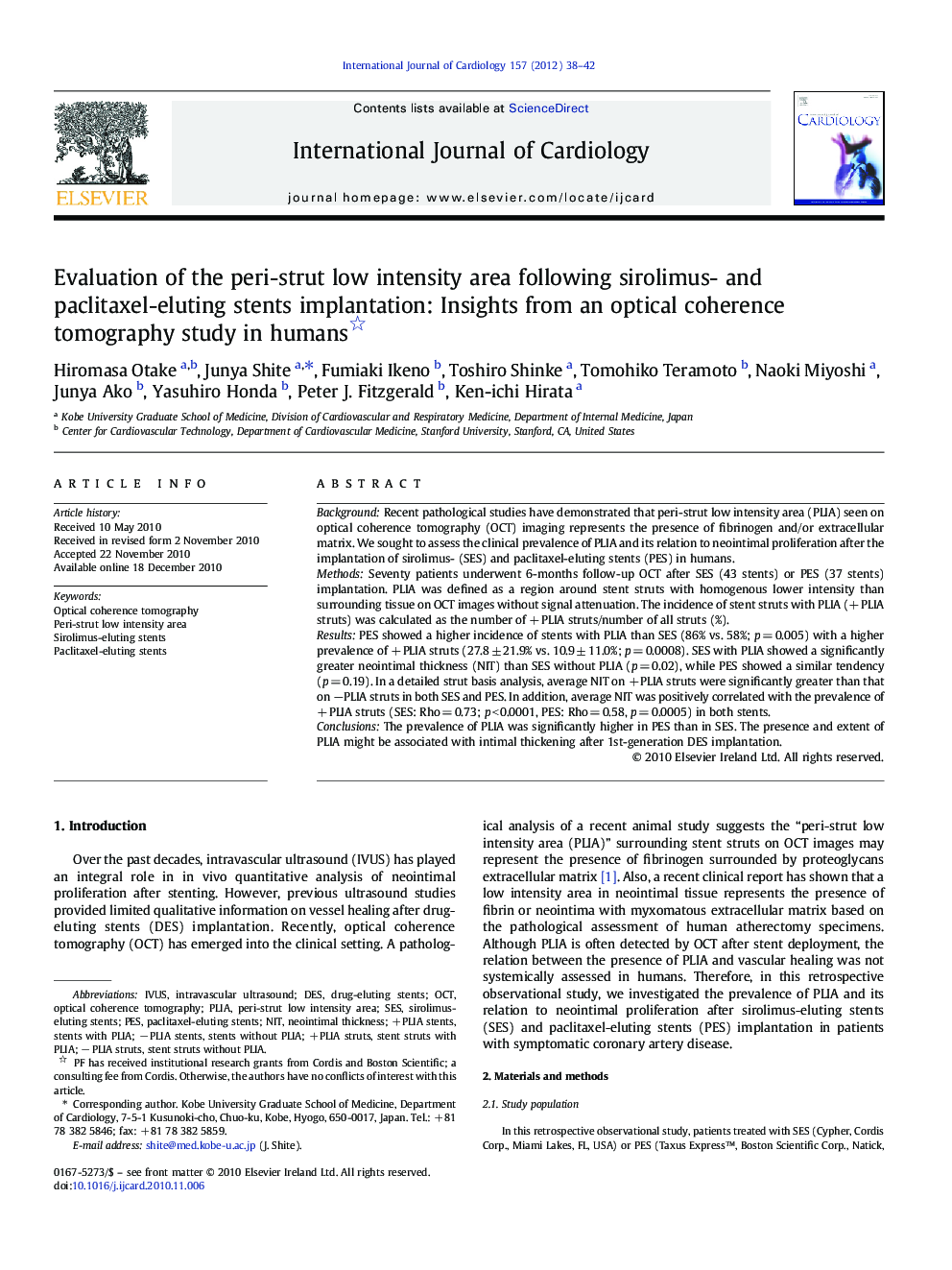| کد مقاله | کد نشریه | سال انتشار | مقاله انگلیسی | نسخه تمام متن |
|---|---|---|---|---|
| 5978705 | 1576249 | 2012 | 5 صفحه PDF | دانلود رایگان |

BackgroundRecent pathological studies have demonstrated that peri-strut low intensity area (PLIA) seen on optical coherence tomography (OCT) imaging represents the presence of fibrinogen and/or extracellular matrix. We sought to assess the clinical prevalence of PLIA and its relation to neointimal proliferation after the implantation of sirolimus- (SES) and paclitaxel-eluting stents (PES) in humans.MethodsSeventy patients underwent 6-months follow-up OCT after SES (43 stents) or PES (37 stents) implantation. PLIA was defined as a region around stent struts with homogenous lower intensity than surrounding tissue on OCT images without signal attenuation. The incidence of stent struts with PLIA (+ PLIA struts) was calculated as the number of + PLIA struts/number of all struts (%).ResultsPES showed a higher incidence of stents with PLIA than SES (86% vs. 58%; p = 0.005) with a higher prevalence of + PLIA struts (27.8 ± 21.9% vs. 10.9 ± 11.0%; p = 0.0008). SES with PLIA showed a significantly greater neointimal thickness (NIT) than SES without PLIA (p = 0.02), while PES showed a similar tendency (p = 0.19). In a detailed strut basis analysis, average NIT on + PLIA struts were significantly greater than that on âPLIA struts in both SES and PES. In addition, average NIT was positively correlated with the prevalence of + PLIA struts (SES: Rho = 0.73; p < 0.0001, PES: Rho = 0.58, p = 0.0005) in both stents.ConclusionsThe prevalence of PLIA was significantly higher in PES than in SES. The presence and extent of PLIA might be associated with intimal thickening after 1st-generation DES implantation.
Journal: International Journal of Cardiology - Volume 157, Issue 1, 17 May 2012, Pages 38-42